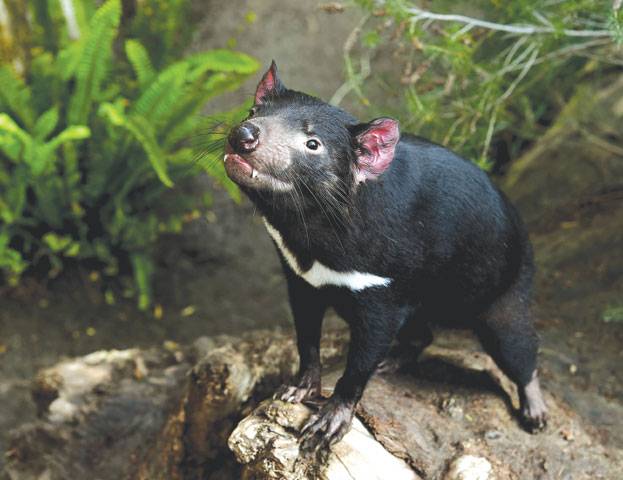PARIS-Their numbers decimated by a vicious facial cancer, Tasmanian devils seem to be pulling back from the brink of extinction through lightning-fast genetic evolution, astonished scientists said on Tuesday. A detailed comparison of the genomes of 294 devils, before and after the cancer emerged 20 years ago, revealed species-wide adaptations in seven genes in just four to six devil generations. Five of the genes are associated with immunity and cancer resistance in mammals. “The devils are evolving,” study co-author Andrew Storfer of Washington State University told AFP. “Remarkably, this evolution was quite rapid.”
Evolution within a species through the acquisition of lasting and beneficial genetic traits in response to factors such as environment or disease, is generally thought to be a long, slow process.
Thus the team were “pleasantly surprised” to observe potential species-saving changes happening essentially before their eyes.
Fellow study author Hamish McCallum of Griffith University in Queensland, Australia, is one of several experts to have predicted the devils would be extinct by now. “I am very glad I was wrong,” he said in a statement on Tuesday. “It appears the devils are saving themselves through evolution.”
Tasmanian devils are small dog-sized nocturnal marsupials indigenous to the Australian island state of Tasmania. An endangered species, the animals are carnivores and aggressive towards one another.
In 1996, scientists first noticed strange tumours growing on the creatures’ faces.
Soon it became apparent that, unlike most cancers, the tumours were infectious and spread by devils biting one another.
Those infected with Devil facial tumour disease (DFTD) often die of starvation as the disfiguring growths prevent them eating. “The disease is nearly 100 percent fatal. It’s moved 95 percent of the way across Tasmania, infecting almost all known populations, it’s caused roughly an 80 percent overall decline in numbers of Tasmanian devils,” Storfer said in a phone briefing. Once in excess of 250,000 individuals, only a few thousand are believed to be left in the wild. Given the extinction predictions, Storfer and colleagues set out to understand why there were still devils around.
They analysed genetic data from thousands of tissue samples collected over more than two decades.
The data showed the devils were “evolving especially fast,” said Paul Hohenlohe of the University of Tasmania, another author of the study published in Nature Communications.
“The disease first appeared in 1996, so just over the course of 20 years is extremely rapid especially for a mammal.”
Scientists have yet to confirm that the observed gene changes do actually boost disease resistance in the devils.
The information may then be used by captive devil breeders to produce animals carrying the protective genetic variants.
“Overall, the evolutionary response of Tasmanian devils observed here suggests hope for the continued survival of this species,” the study authors concluded.
Conservationists are keen to spare the Tasmanian devil the fate of the thylacine or Tasmanian wolf - the previous largest marsupial predator, which died out in the 1930s.






